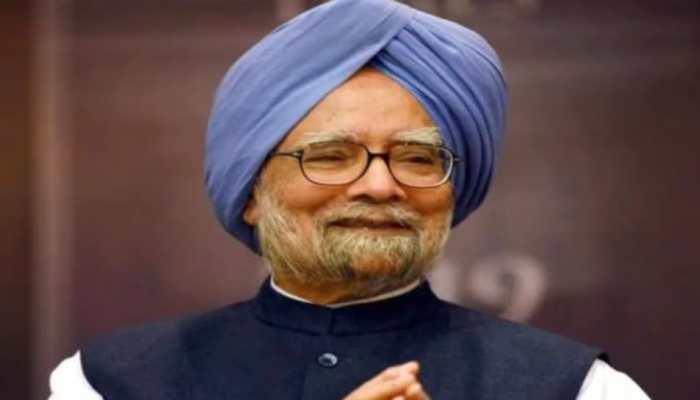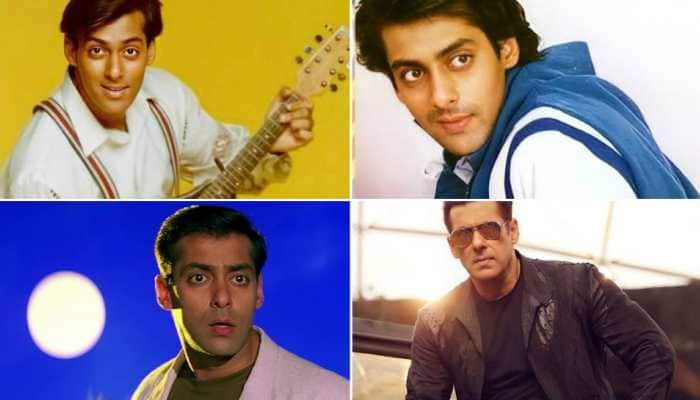DNA Exclusive: Remembering supreme sacrifice of Bhagat Singh, Sukhdev and Rajguru on Shaheed Diwas
The nation today remembered the supreme sacrifice made by Bhagat Singh, Sukhdev Thapar and Shivaram Rajguru, the three freedom fighters who were martyred this day in 1931.
- Nation observed Shaheed Diwas today
- The day commemorates Bhagat Singh, Sukhdev and Rajguru who gave their lives for the country
- Their supreme sacrifice inspired generations of youth
Trending Photos
)
New Delhi: The nation today remembered the supreme sacrifice made by Bhagat Singh, Sukhdev Thapar and Shivaram Rajguru, the three freedom fighters who were martyred this day in 1931.
Martyrs' Day is observed on March 23 every year to commemorate the hanging of the three brave sons of the soil by the Britishers who occupied India.
Zee News Anchor Mimansa Malik on Tuesday (March 23) narrated the story of the three martyrs, who stood against the British empire and inspired generations of youth to follow in their footsteps.
March 23, 1931 - It was on this day that the great revolutionaries Bhagat Singh, Sukhdev Thapar and Shivram Hari Rajguru had embraced the hanging noose as a necklace of freedom.
Shaheed Bhagat Singh used to say that revolution does not come from bombs and pistols, but through the thoughts and ideas of people. He wanted to see India independent of British shackles but was hanged 16 years, 4 months and 23 days before independence came. He embraced his martyrdom smiling.
In a letter, Bhagat Singh wrote:
"Today I can live on one condition only... I do not want to live like a slave. My name has become a symbol of the revolution of Hindustan. The ideals and sacrifices of the revolutionary groups have raised my stature... As high as I cannot possibly be if I live."
These writings of Bhagat Singh still touch the hearts of crores of people.
At that time Bhagat Singh, Rajguru and Sukhdev had become role models of the whole of India. The youth were shouting slogans of Vande Mataram on the street of the country. The Britishers were frightened seeing the fire of the movement.
Why were Bhagat Singh, Sukhdev and Rajguru hanged?
On October 30, 1928, the Simon Commission, a group of seven British reached Lahore. This commission was established in the year 1927, with the aim of working on constitutional reforms in India and consolidating their hold on India.
The Commission was met with massive protests. Lala Lajpat Rai led the revolution as he took to the streets against the Commission.
The British tried to suppress the movement. Superintendent of Police James A. Scott ordered a lathi-charge on Lala Lajpat Rai and other protesters. Rai, who was severely injured, died on November 18, 1928. His death filled the revolutionaries with fury and then it was decided that his death would be avenged.
Several revolutionaries, including Bhagat Singh, Sukhdev, Rajguru and Chandrashekhar Azad, together planned to avenge Rai's death by killing James Scott. However, instead of Scott, John Saunders, who was also part of the brutal lathi-charge on Lala Lajpat Rai, became the target as Bhagat Singh and Rajguru fired bullets at him. Saunders died.
Bhagat Singh and Rajguru managed to escape after the incident.
While the case was still being investigated, revolutionaries planned to throw a bomb in the Central Assembly. On April 8, 1929, Bhagat Singh and Batukeshwar Dutt threw a bomb in the Assembly, which is the Parliament building today.
They showered leaflets from the gallery on the legislators below, shouted slogans, and then allowed the authorities to arrest them.
The purpose of the blast was to awaken the deaf and dumb British government.
The arrest, and the resulting publicity, brought to light Singh's complicity in the John Saunders case.
It is also called the Lahore Conspiracy Case, which was very much discussed at that time. The trial began on May 5, 1930, and lasted until September 11, 1930.
Finally, on October 17, 1930, the court sentenced the hanging of Bhagat Singh, Sukhdev and Rajguru. The sentence was carried out on March 23, 1931, as chants of Inquilab Zindabad filled the Lahore Jail.
Bhagat Singh was not a supporter of bombs and pistols. He did not support violence. He only believed that when oppression grows too much and the tune of revolution seems to fade away, then a few loud blasts are needed to pierce through the deaf ears.
Stay informed on all the latest news, real-time breaking news updates, and follow all the important headlines in india news and world News on Zee News.
Live Tv







)
)
)
)
)
)
)
)
)
)
